Each modern person at least once in his life came across the problem of parasites in the body.The amount of parasites and variety of parasites, which in the literal sense of words cannot live without us are simply huge.Parasites in the human body use it as a source of food and habitats until they completely exhaust it, but without giving their presence.
The parasites are microscopic sizes or can grow up to a few meters in length, but even in this case, their vital activity in the body cannot always feel.The person, as a rule, I don't feel them and knows them for their presence in myself.In the meantime, they can live in the human body for years, and even decades, causing him irreparable damage.
Parasites in the human body represent a serious danger and represent a great threat to human health, because the work of internal bodies and systems provokes the failure to work the immune system and interfere with full assimilation of useful substances, vitamins and minerals.In some cases, the situation is so serious that it can even lead to death.
Types of relationship between organisms
In nature, there are several types of relationships between the organisms that have a different effect on each other.
The impact of one species to another can have neutral or positive and negative.
In addition, there are various combinations of such relationships.Distinguish:
- Symbiosis;
- neutralism;
- Antibiosis.
Symbiosis is a form of relationship between two organisms from which it uses.
Neutralism is a type of biological connection, which consists in the neighborhood of two organisms in one territory, but at the same time they are not connected to each other and do not affect each other directly.
Antibiism is an antagonistic type of biological relationship in which one type of population limits the possibility of another, negatively affect it.One of the most negative types of antibysm is parasitism.
Parasitism and parasites
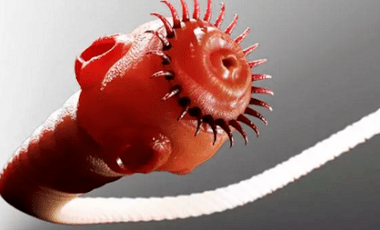
Parasitism is a form of antibiotics in which representatives of one species use the body of another type as a temporary or constant environment for the environment and the source of nutrients.
Biological organisms living in the detriment of another organism are called parasites.
Parasites do not kill their owner, they have been using as a source of food and habitats for a long time.
Parasites include:
- Parasitic worms;
- Pathogenic bacteria;
- protozoa;
- mushrooms;
- Viruses.
Host organisms can be:
- Bacteria;
- protozoa;
- plants;
- animals;
- The man.
In the development process, parasites pass several stages of egg development and larvae to adults (sexually mature, invasive), which indicates their long life and should change 2-3 owners.
Parasite classification
All parasites are divided into bond and elective.
Mandatory parasites outside the host body or die or exist in inactive condition.For example: viruses.They lead the exclusive parasitic way of life, ie they depend entirely on the owner and activate their activities within it.
Optional parasites lead a parasitic way of life, but if necessary, it can exist in absolutely normal form in an external environment.For example: pathogenic mushrooms and bacteria.
The nature of the relationship with the host body, shares:
- Real parasites;
- False parasites;
- Super parasites.
Real parasites are the same bonds for which the parasitic way of life is the only form of survival.However, there are parasites that can be either tied (constant) and optional (time).For example: ears, fleas, intestinal hermints.
False parasites - Voluntarily live organisms, which in the event accidentally enter the body, can live in it for a while and cause it.For example: the larvae rooms fly in a person's intestine.
Super parasites are parasites living in other parasites.For example: bacteria and viruses in other parasitic insects living in other organisms.
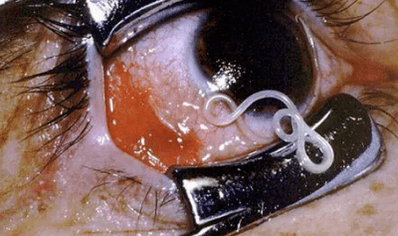
Depending on the duration of interaction with the host body, they differ:
- Permanent parasites;
- Temporary parasites.
Permanent parasites are organisms that spend their entire life cycle in the body - the owner, placing the larvae in it.For example: Ascarides, tapeworms, ears.
Temporary parasites;Living and eating to the detriment of the owner at a certain stage of development.For example: Larve Volt-Farts fly and have any imaging (adults) - forces and mosquitoes.
At the location of the host bodies, the parasites are divided into:
- ectoparaziti;
- Endoparasites.
Ectoparasy are organisms living on the skin of the host body.For example: ears, fleas, ticks.
Endoparasites are organisms inside the host body.Endoparasites are divided into:
- Internal parasites;
- Tissue parasites;
- intracellular.
Parasites in the intracut are organisms found in the cavities that connect to the external environment, for example: Ascaris, Vlasov-under the forefront of human intestines.
Fabrics Parasites - Type of organisms found in closed cavities and host body tissues, for example: for example, liver bacon, cord cord cord.
Intracellular parasites are localized in body cells - owner, for example: malaria plasmodia, toxoplasm.
In terms of environmental distribution, parasites are:
- Curly, encountered everywhere;
- Tropical, which are common only in a hot, tropical climate.
According to biological and epidemiological characteristics, parasites are divided into:
- GeoGelminters- These are parasites that initially passed the developmental phase in the human body, and then in the external environment (for example, land);
- Biogelminters- Parasites in which the development cycle takes place not only in the human body, but also in the organisms of other creatures.The person, as a rule, is the ultimate owner, and sometimes the middle.
- Contact HelminthsThey are characterized from the host body, but by mature or semi-industrially, as a result of the fact that it is possible to repeat its infection or the infection of another person (Autoinasia, Reinvasia).
How parasites fall into the human body
There are many favorable factors that contribute to the input of parasites into the human body:

- dirty hands;
- Animal hair;
- Bad cooked products (alimentary factor);
- Contact-host factor;
- portable;
- Percutant.
Dirty hands are the main source of parasitic infection.There are several diseases called "diseases of dirty hands."Leakews of worms, which fall to the skin of the hand, and then cause characteristic symptoms from the gastrointestinal tract in the mouth.The path of transmission of these infections is called fecal-orally.Therefore, helminths with contact helminthiasisis belong to our body.For example, the Eggs Ascaride enter the human body through dirty hands, poorly washed vegetables, fruits, berries, greenery and spreads and flies.
Animals and their wool Source are ascarides and lipiles with worms.For example, for a long time, which fell off the animal wool, retains vitality (up to about 6 months) and, falls on carpets, things, bedding, children's toys and hands, penetrate the food tract.
Also, wet breathing, dogs and cats can waste parasite eggs at a distance of 3 - 5 meters.In addition, there are fleas on the wool of dogs and cats, which also tends to bear the worm eggs.
The food method of parasite infection is performed:
- through poorly washed vegetables and fruits;
- poorly boiled food (most common meat);
- Infected water.
For example, irregularly cooked barbecue, Jerky or home land can infect a person with trichinosis and echinococcus, and poorly cooked dry fish or caviar may cause infection with desisthorchiasis and wide tape.
The transmissive method of infection occurs using blood insects - for example: ticks, mosquitoes, ears, fleas, mistakes.
Contact - Domestic path of infection is done through an infected person or animal, when contacting or using common home items.
The percular method of infection occurs while swimming in tanks or in contact with infected soil.Larvae penetrates the body through the mucous membrane or human skin during contacts with water or infected soil.
Device features
Almost all parasites are very adaptable for survival.There are a number of factors that contribute to their high vitality:
- Long-awaited lifespan.For example, Helminthi live in human body for years, and sometimes exactly as the owner and the owner lives.
- Helminth eggs are able to explore and do not fall apart in an external environment for decades.
- The parasite development phase also contributes to its life duration.All phases of development passes, starting with egg, continuing the paint and change of owners, in case of lack of nutrients.
- The ability of the parasite to cause the state of immunodeficiency in the owner, which allows you to penetrate from pathogenic agents from outside, as well as "stems" dormant internal infections.
- Helminths belonging to the gastrointestinal tract of persons, produce anti -enzymes, which enables them to pass their death, but at the same time violate the normal process of diet and cause toxico - allergic reactions in their host: asthma, urticaria, dermatitis.
- The non-arbitability of the parasite is associated with the exchange of genetic information during sexual reproduction, leading to the stability of their heterogeneous population.
- Wide vitality of helmintha in many habitats: soil, water, animals, plants.
- Lack of efficient immunoprophylaxis methods, as parasites are able to suppress or modify the immune response of the host body.
How to recognize parasites in the body
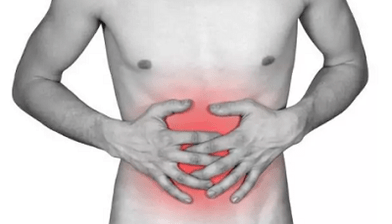
As a rule, a person asks such a question when his health is thoroughly understood.It is common for a person to reject the problem in his initial phase until it develops into a serious form and will not affect his goodness.
Since the parasites are divided with the habitat in the body - the owner in the endoparosites and ectomopies, the symptoms are divided into inner and external.
Ectoparasites characterizes a certain activity that is manifested by the following symptoms:
- Skin sharpen;
- Itching;
- ignition;
- Hyperemia;
- pain (if it was a bite);
- the presence of the wound in place of snacks.
Endoparasit detection is much easier.The following actions are carried out for this:
- Visual identification (if there is a penetration outside through the skin);
- Microscopic examination.
The discovery of ectoparas is a difficult task, because in the evolution of "addicts" have adapted to the survival, while disguising and without issuing themselves, they spend destructive work in the host body.Finally, a person lives, for example, with worms of his appearance, and the phases of their development can last from several months to a decade.So how to determine the presence of parasite in the body?
External and internal events
Since parasites differ in a long expected life and active multiplication in the human body, cause symptoms that are long-lasting and chronic.
Exterior Events Parasitic activities include:
- skin rash;
- Itching;
- ignition;
- Hyperemia;
- fever;
- Quincke's edema.
It is important to know that the degree of allergy development depends on many factors:
- the location of the parasite in the body;
- Contact parasites with tissues and vital organs;
- the amount of toxins produced.
The following symptoms include violations in the body of the internal invasion:
- Disorders in the operation of gastrointestinal tract (nausea, diarrhea, belching);
- Weight fluctuations associated with the lack of nutrients and decreasing appetite;
- Craving for sweets due to metabolic disorders and general weakening of the body;
- Chronic tired syndrome, which is manifested by general fatigue, drowsiness, in some cases insomnia, impaired concentration and memory;
- constant headaches caused by the weakness of the body and intoxication;
- Grinding teeth in sleep (bruxism), is especially manifested in children;
- swelling of limbs;
- Nervous disorders and mental disorders, because parasites can cause depression and irritability;
- Paroxysmal cough;
- Muscles and joint pain;
- painful pale skin;
- Leather lesions (dermatitis, eczema, acne and acne).
It is especially important to know the general symptoms that are noticed in the invasion of the intestinal parasitic invasion.
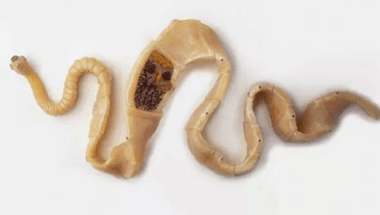
Violations in the digestive tract, which is manifested by the following symptoms:
- intestinal cramps;
- Irrial hose syndrome;
- bloating;
- prison or diarrhea;
- Change in color of feces;
- itching in the anus;
- Visual disclosure of Helmint;
- The presence of worms in Gaga.
Since worms can reach significant size in the body, they are able to physically complicate the progress of feces and violate the work of other bodies, for example, bile channels.
Parasites can cause injuries in the work of a particular body or system.
The most common violations are:
- Anemia.
- Lesions of the central nervous system.
- Abscesses in the liver.
- Gnody inflammation of bile bladder and pancreas.
- Fruits in the work of immunity, until the development of autoimmune reactions.
- Disorders in the work of the respiratory system.
- Joint diseases.
Parasite diagnosis
All of the above symptoms cannot always precisely confirm the presence of the parasite in the body, because these symptoms can be noticed with many diseases.
You can establish the presence of the parasite in the human body when examining the feces.However, this method is unreliable, because the larvae of parasites cannot always see through a microscope or skip them.In addition, not all parasites are many eggs.
In order to discover the larvae of the parasite in the feces, it is necessary to last up to 8-10 times higher than fecal analysis.But if in this case, the analysis did not show anything suspicious, then a series of serological blood tests are prescribed, which will help discover antibodies that appear in the blood for a few weeks after the parasite infection.
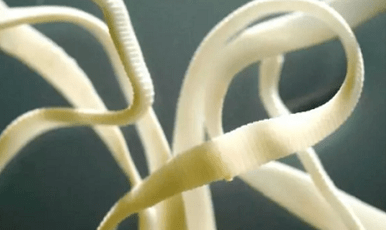
There are other methods for identifying "dependents" so-thefaced series tests.String with the capsule is inserted into the intestines through the nose and was removed after four hours together with the samples received.
Another method is a colonoscopy during which the expert considers the state of the inner surface of the colon using a special probe.
Specialists found that the most common parasites are helminths.In addition, they are all very sustainable and fertile, and their goal is to destroy their master's degree and extract maximum benefits for themselves.
How to remove parasites from the human body
It is difficult to solve parasites, but it is possible.It is important to give priority: it is necessary not only to know how to get rid of the parasites, but also understand which process of treatment.It is performed in three directions:
- Destruction of parasites at all stages of existence.That is, it is necessary to destroy not only adults, but also larvae and their eggs.
- Normalization of the work of all bodies and body systems.
- Body renovation.
To meet all the three items, it will help modern drugs based on plant components that the specialist prescribes.
Such drugs are modern medications and have a specific therapeutic effect.The use of these drugs in the complex allows you to combine their therapeutic effect and a wonderful result.
Dosage and combination of drugs with each other is done on the basis of:
- Stages of parasitic invasion;
- General state of the patient;
- availability of complications from a particular body;
- the severity of the flow of illness.
The priority of anthelmintic medications is based on:
- efficiency;
- security;
- Ability to combine several medications for the best therapeutic effect.
Treatment to folk drugs is a very effective way to solve parasites.The most commonly used grass cleansing, which neutralizes the harmful effect of the parasite, clean the liver and bile bladder.
They prepare tea as follows: Get one spoon of the following plants each: oak bark, Buckhorn, Pelin, Tansy.Then one tablespoon of herbal mixture pours out with 500 ml of boiling water and left in a closed meal overnight.In the morning, on an empty stomach, it drunk 100 grams of incurred tincture.Treatment continues for two to three weeks.
Pumpkin seeds are also very effective in the fight against parasites.To get rid of the parasite, 300 grams of pumpkin seeds are taken, they are cleaned from peeling, but at the same time they leave as many transparent films as possible, which envelops seeds.Seeds must be eaten in the morning on an empty stomach.This recipe eliminates not only parasites, but also improves the functioning of hoses, stomach, liver and gallbladder.





















